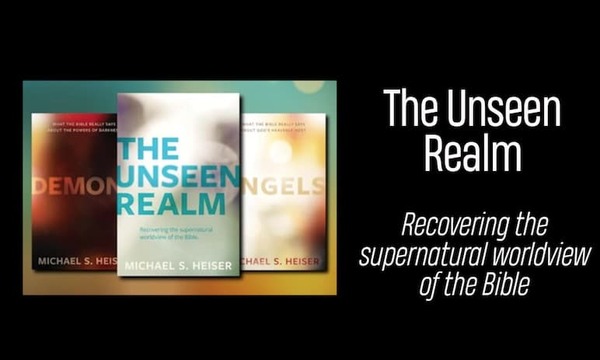The Gospels use multisensory language to reveal that Jesus’ teaching, ministry, and interactions with people engaged the senses. Talbot School of Theology professor Dr. Jeannine Hanger recently published a new book — “Engaging Jesus With Our Senses: An Embodied Approach to the Gospels” — that offers a fresh way to read the Gospels with an emphasis on embodiment, focused on a life abiding in Christ. The following is an excerpt from Hanger’s new book.
“C’mon, Jeannine, let’s say it again.”
My mind was blank. “Chris, I don’t know if I can.” My friend was trying to distract me, to get me to think of anything but the sweltering heat.
“You can. Let’s try to remember.” He started, “Therefore, since we are surrounded by such a great cloud of witnesses . . .” Our feet kept pounding the pavement. The crowds were lined up on both sides of the street, cheering.
I was trying to remember. “Let us throw off everything that hinders . . .” I shuddered at the chills coursing through my body. Heat exhaustion was setting in. My mind was fuzzy. I wanted to stop.
“. . . let us run the race marked out for us.” We were attempting to run our first-ever marathon.
“Look, a water station!” We grasped at the cups of water handed out by volunteers. I took one to drink, one to pour over my head. It revived me enough to keep moving.
I was a freshman in college that year. Chris was dating one of my friends, and a group of us had road-tripped to Los Angeles so that three of us could accomplish this goal. We had trained and carbo-loaded. And we were the epitome of fresh-faced, idealistic Christian youth: in anticipation of the marathon, we had memorized a biblical text. Thinking we were so novel, we settled on what turned out to be every runner’s favorite: Hebrews 12:1–3. It’s a passage about endurance in the life of faith, pictured as a race: “Therefore, since we are surrounded by such a great cloud of witnesses, let us throw off everything that hinders, and the sin that so easily entangles, and let us run with perseverance the race marked out for us. Let us fix our eyes on Jesus…” It seemed appropriate for the event.
So we thought we were prepared to run the 26.2 miles, but no one had anticipated the heat. That early March Sunday was the hottest marathon day L.A. had ever seen. Barely eight miles in, we witnessed the third of our trio require medical attention. After bidding farewell to the ambulance, we continued — shaken and exhausted with much more to go. As we slowly wound our way through the racecourse, I was not sure how much longer I could run. I began to take in water at every mile where volunteers offered it. The water revived me. I drank it and let it douse me whenever possible.
The second dynamic that sustained me was the encouragement provided by the crowds. Their cheering, clapping, and excitement were contagious, pushing me along with the other runners. As the fever chills dissipated, I began to cast off my introverted shyness and lean into the encouragement. The crowd embodied the “cloud of witnesses” of Hebrews 12:1, and soon I began to participate in the high fives being offered. I spent the better part of fifteen miles taking in water and literally high-fiving my way to the finish line.
Contrary to what you might think, this excruciating event did not prompt me to quit running. Running, for me, has come to have a regulatory effect on my physical health, my mental and emotional rhythms, and my spiritual life with God.
The reason I tell this story, however, is because of a tactile habit I’ve developed quite by accident, and it traces back to that scorching day in L.A. On any given run, whenever I pass an eye-level species of palm tree, I reach out and brush its fronds with my hand. Over time I came to notice how brushing a palm branch reminds me of the “cloud of witnesses” in Hebrews 12: I was “high-fiving” the branches. This tactile action somehow puts me right back on the marathon course, imbibing whatever encouragement I can on that day — it reminds me of the people cheering me to keep going despite the heat. Unthinkingly, I had transferred these tactile memories into an embodied practice in my running life. Today, on a run, when I am praying or reflecting, I can “high-five” a branch and recall in my body a memory of being encouraged. This gesture reminds me that I am not alone in this life. I marvel at how the body holds memories that can influence us today and can help shape us going forward.
This is a book about the physical senses. As described in this little tale of my own sensory life, our sensory abilities have the power to encode all kinds of experiences into the fabric of our beings. All of this suggests that our physical senses matter to how we walk through this life. But this is also a book about engaging biblical texts with our senses intact. That is, we are going to consider our embodied, sensory lives and ask, Do the physical senses matter to how we engage the Bible? The short answer is yes. What follows is an invitation to consider why and how this is, seeking to understand more of God along the way.
The above excerpt is from Engaging Jesus with Our Senses by Dr. Jeannine Marie Hanger, ©2024. Used by permission of Baker Academic. The book is available for purchase on Amazon and at major book retailers.
 Biola University
Biola University.jpg)

.jpg)


.jpg)